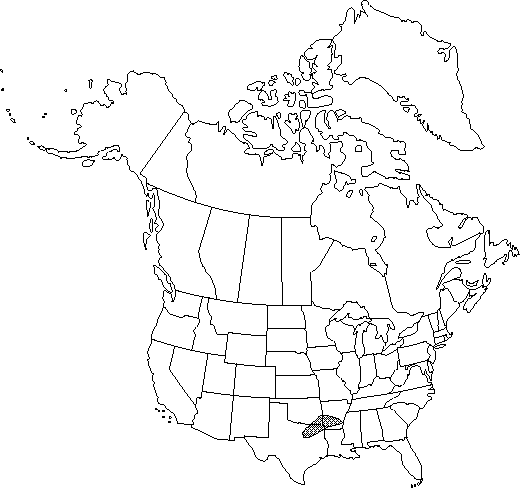Thalictrum arkansanum
Rhodora 46: 433. 1944.
Roots brown, thick, tuberous. Stems decumbent, 20-40 cm, glabrous. Leaves: distal cauline long-petiolate. Leaf blade 1-3×-ternately compound; leaflets ovate to obovate to reniform or orbiculate, 3-(or more)-lobed, largest leaflets less than 15 mm wide, lobe margins crenate, surfaces glabrous. Inflorescences terminal, racemes, few flowered. Flowers: sepals whitish, ovate or elliptic, 0.9-2.8(-3) mm; filaments colored, 2-3 mm; anthers 1.8-2.3 mm, mucronate, tip 0.1-0.4 mm; stigma color unknown. Achenes few, not reflexed, nearly sessile; stipe 0.1-0.3 mm; body ellipsoid to oblong, 3.5-4.5 × 1.5-2 mm, glabrous, veins 10-12, not anastomosing-reticulate; beak (1.3-)2.3-3 mm.
Phenology: Flowering early spring (Mar–Apr).
Habitat: Wet bottomland forest, sometimes upland woods
Elevation: 20-150 m
Distribution

Ark., Okla., Tex.
Discussion
Of conservation concern.
Poorly known, Thalictrum arkansanum is closely related to T. texanum and T. debile; it possibly should be considered as a variety of the latter.
Selected References
None.